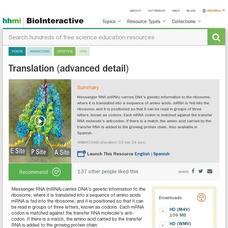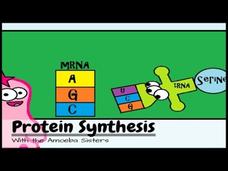TED Talks
TED: A virus-resistant organism -- and what it could mean for the future | Jason W. Chin
What if we could use the power of DNA to create a sustainable, circular economy? In a talk about breakthrough science, synthetic biologist Jason W. Chin describes his team's work rewriting the genetic blueprint of cells to create a...
TED-Ed
TED-ED: Is DNA the future of data storage? - Leo Bear-McGuinness
In the event of a nuclear fallout, every piece of digital and written information could all be lost. Luckily, there is a way that all of human history could be recorded and safely stored beyond the civilization's end. And the key...
Professor Dave Explains
Synthetic Biology and Materials Science Part 2: Nature-Made Plastics
In the previous tutorial we outlined the basics regarding synthetic biology as applied to materials science. We can engineer microorganisms that will produce virtually any compound we want, via a series of reactions that are catalyzed by...
Science ABC
What are Mutations and what are the different types of Mutations?
A mutation is a random change in the DNA. Mutations can be neutral, which means it does not cause a change in a trait of the organism, or it could cause a beneficial or a harmful mutation. There are a few different types of mutations -...
Ancient Lights Media
Introduction to the Genetic Code
Genetic Expression Set: 3. This clip examines the chemical structure of DNA and RNA and explains how the genetic code is written and expressed.
Professor Dave Explains
Transcription and Translation: From DNA to Protein
Ok, so everyone knows that DNA is the genetic code, but what does that mean? How can some little molecule be a code that makes a single cell develop into a giraffe, or a monkey, or Tony Danza? Within this clip lie the answers, child!
FuseSchool
Protein Synthesis
Proteins are made of a long chain of amino acids, which has been coded for by DNA. The order of the bases of DNA determines which protein is made, by coding for a specific order of amino acids. This is protein synthesis, and in this...
Howard Hughes Medical Institute
Translation (Advanced Detail)
Who said staying predictable is a bad thing? Translation follows a predictable four-step process. Scholars view a summary of each step with a breakdown of every detail, then examine different functions, highlighted with different colors,...
Amoeba Sisters
Protein Synthesis
Can your class visualize how proteins synthesize? Take a tour of the all-important process of protein synthesis to discover why our bodies depend on it. A video from an animated biology playlist covers transcription and translation, as...
Amoeba Sisters
Protein Synthesis and the Lean, Mean Ribosome Machines
Don't copy from each other, unless you are DNA — in which case, please make an exact copy. The video explains protein synthesis including the difference in transcription and translation. It touches on codon and how reading three bases at...
Sophia Learning
Sophia: Protein Synthesis: Transcription: Lesson 2
This lesson will examine the process of transcription as the first step in protein synthesis. It will also identify the three types of RNA. It is 2 of 4 in the series titled "Protein Synthesis: Transcription."




